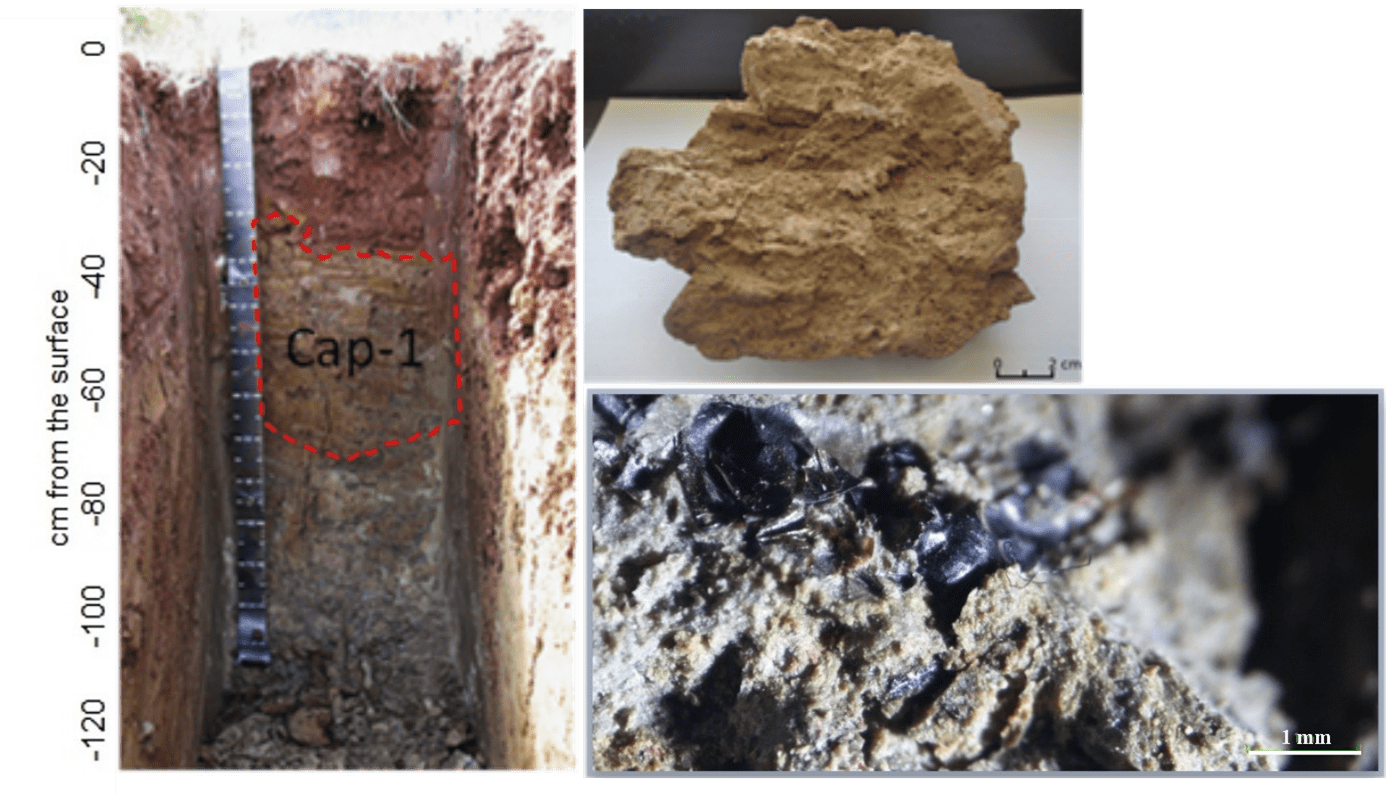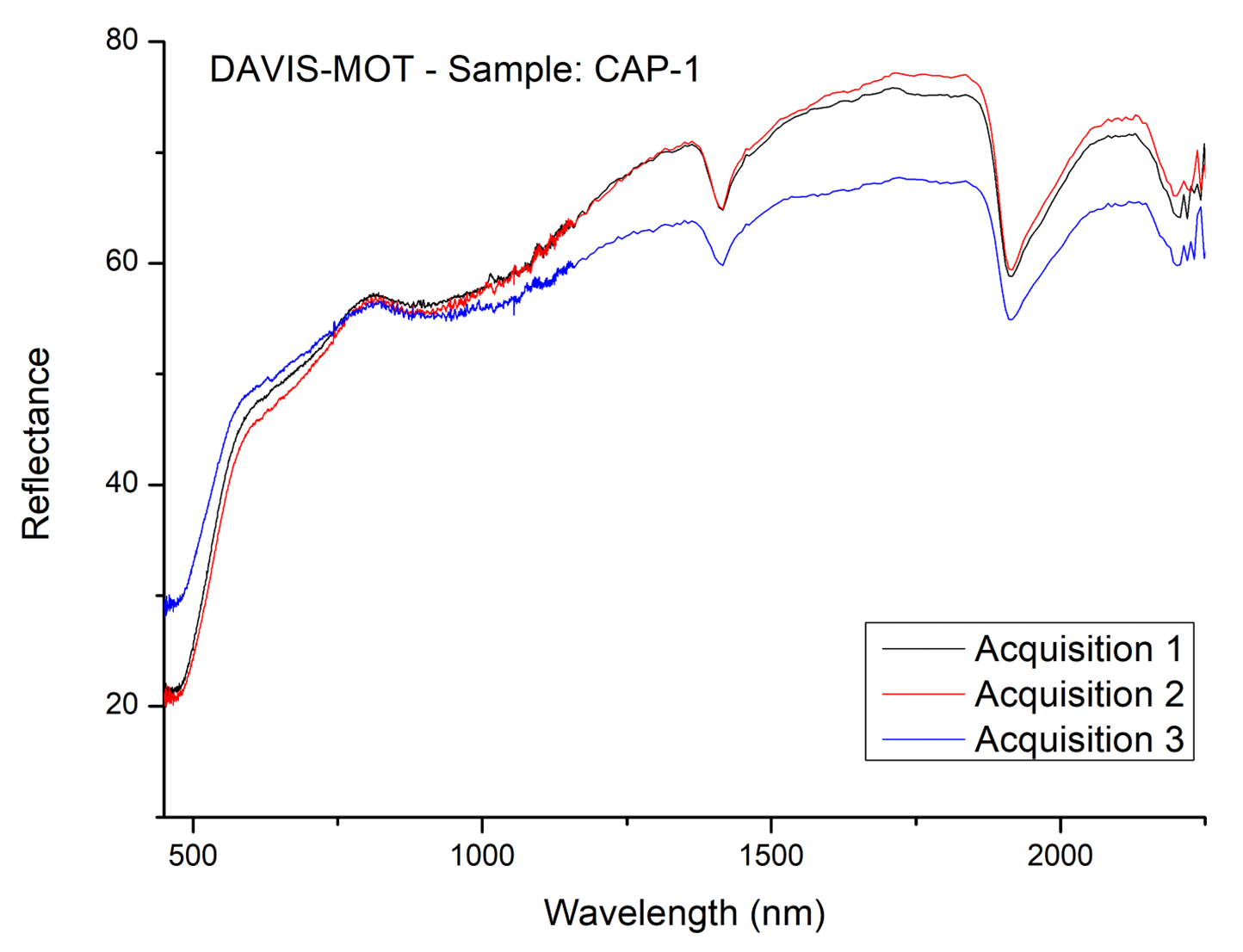Importance of spectral acquisition of a Martian analogue with DAVIS breadboard
- 1Institute for Space Astrophysics and Planetology, IAPS-INAF, Rome, Italy(nicole.costa@inaf.it)
- 2Italian Space Agency, ASI, Rome, Italy
Introduction: ExoMars rover Rosalind Franklin will search for traces of past or present life potentially preserved in the designated landing site Oxia Planum [1]. Oxia is located in the western part of Arabia Terra, where geology shows evidence of a past long-lived liquid water body [2]. This clay-bearing plain is overlapped by deltaic system material provided by channels of Coogoon Valles. Spectral detections underlie the possible presence of Fe-rich phyllosilicate (for example vermiculite) and Mg-rich phyllosilicate (for example saponite) mixed with a variable amount of olivine. A mafic coating-resistant unit seems to be present [3,4,5].
Many minerals are expected to be analyzed by the Ma_MISS (Mars Multispectral Imager for Subsurface Studies) instrument at the landing site. The drill is also made up of three extensible 50 cm-long rods. The instrument is a VNIR (0.4–2.3 µm) miniaturized spectrometer in-stalled into the rover drill’s tip. It will acquire borehole spectral images in situ to study the subsurface mineralogy up to 2 m depth with a spatial resolution of 120 µm for looking at organics traces. Ma_MISS is composed of the Optical Head with fibres into the tip and the other fibres in the rods, while the spectrometer and the electronic are outside on the drill box. The sapphire window in the main rod allows the 5W light to illuminate inside the borehole and the reflected signal to be acquired by the spectrometer. The light illuminates a 1 mm diameter spot at ~0.6 mm focal distance. Thanks to drill rotation and vertical movement, Ma_MISS can collect several points to reconstruct a complete borehole image [1].
Laboratory breadboard: Drill for Analogues and Visible-Infrared Spectrometer (DAVIS) is the recent laboratory setup consisting of Laboratory Drill (DAVIS-LD) and Ma_MISS Optical Tool (DAVIS-MOT) (Figure 1). The first one (LD) is the replica of the rover drill except for the spectral acquisition system. The vertical motion is actuated by a hand lever to drill a hole in the rock samples. The motor unit is the same as the flight model but the controller is a commercial EC motor, which control the rotational speed (50 rpm) [6]. The second one (MOT) comprises a 75 cm-long and 25.4 mm-diameter rod, 5W lamp, Sapphire window, Optical Head, and an optical fibre. It is the copy of rover Ma_MISS except for the drilling ability. In this case, rover spectrometer is replaced with two Avantes VIS-NIR spectrometers. The Optical Head fibre is connected with the Avantes fibre through a mini-Avim connector. Being a replica of Ma_MISS, the light spot has 1 mm diameter at ~0.6 mm focal distance and the spatial resolution is 120 µm. It acquire in two different configurations: 1) Slab or powder samples are hosted in a vertical three-axis sample-holder and 2) manual motion of the rod to enter in the sample borehole [7].
Figure 1 – a) Ma_MISS Optical Tool (DAVIS-MOT) and b) Laboratory Drill (DAVIS-LD).
Martian Analogue sample: The Martian analogue denominated CAP-1 was collected during a geological survey of the Institute for Space Astrophysics and Planetology (IAPS), in October 2021. It was gathered in 120 cm-depth excavated trench in the area of Capalbio (Tuscany, Italy). It is a Pleistocene metasedimentary rock subjected to hydrothermal alteration/weathering (Figure 2). This brownish siltstone/mudstone is a quite compact rock in dry conditions and brittle in wet conditions. Inside it, there are a few discoidal, sub-angular grains with a diameter higher than 2 mm and different colors (black, reddish, and white), and low sphericity. Grains are not-oriented, except for black Manganese aggregates, which form thin veins with a diameter of about 2-5 mm. Other grains are white rectangular precipitations of Al-bearing clay (kaolinite) and reddish irregular aggregates formed by iron oxide (hematite). The brownish fine-grained (granulometry in the order of silt-clay) matrix has medium porosity, without cement. It lacks stratification and it shows possible alteration due to iron oxidation. CAP-1 is well-sorted, texturally and compositionally mature. The mineral assemblage of the CAP-1 sample is constituted of Mg/Fe smectite, kaolinite, illite, quartz, and minor calcite. It can contain some part of organic material based on analysis of similar soil in the area, but no detectable fossil evidence is found inside.

Figure 2 – a) Outcrop where CAP-1 is extracted (sampling depth 30-75 cm); b) Sample Capalbio CAP-1; c) Details of CAP-1 taken under a microscope: Mn aggregates.
Discussion and conclusions: Some preliminary acquisitions are taken using the DAVIS-MOT, as we can see in Figure 3. We acquire 3 random points on a planar surface of the sample. After that, raw data of spectra are smoothed and merged between 1075 and 1140 nm (the AVANTES spectrometer has two different detectors and the acquisitions are made for the VIS and IR in two steps). Resampling is done in 364 points between 400 and 2300 nm. Spectra show characteristic absorption bands of water at 1.4 and 1.9 µm, well-shaped absorption bands at 0.95 and 2.2 µm associated with iron transition and Al-OH bond respectively. A deep spectral analysis will be done after the new laboratory acquisition of this sample.

Figure 3 – VIS-NIR CAP-1 spectra acquired by DAVIS-MOT.
Acknowledgments: This work is supported by the Italian Space Agency (ASI) grant ASI-INAF n. 2017-412-H.0. Ma_MISS is funded by ASI and INAF.
References: [1] De Sanctis, M. C. et al. (2017) Astrobiology, 17(6–7), doi: 10.1089/ast.2016.1541; [2] Davis, J. M. et al. (2016) Geology, 44(10), doi: 10.1130/G38247.1; [3] Quantin-Nataf, C. et al. (2021) Astrobiology, 21(3), doi: 10.1089/ast.2019.2191; [4] Mandon, L. et al. (2021) Astrobiology, 21(4), doi: 10.1089/ast.2020.2292; [5] Brossier, J. (2022) Icarus, accepted pending revisions; [6] Rossi, L. et al. (2022) LPSC 53, Abstract #1353, [7] De Angelis, S et al. (2022) LPSC 53, Abstract #1796.
How to cite: Costa, N., Ferrari, M., Frigeri, A., De Sanctis, M. C., De Angelis, S., Ragazzo, A. V., Altieri, F., Ammannito, E., Apuzzo, A., Rossi, L., and Formisano, M.: Importance of spectral acquisition of a Martian analogue with DAVIS breadboard, Europlanet Science Congress 2022, Granada, Spain, 18–23 Sep 2022, EPSC2022-165, https://doi.org/10.5194/epsc2022-165, 2022.

